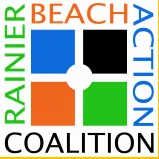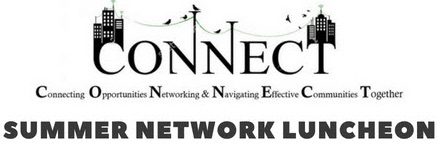Written by: Ken Gillgren
Way back in 1970, when I was a senior in high school, I attended an elective class on mass media and learned you can’t assume something is true just because it showed up in The New York Times. The entire class was about the ways in which logical fallacies, appeals to emotion, and other tools for influencing public thought and opinion have long lurked in the channels of mass media — including those we have come to see as authoritative, and the presumptive “guardians” of public integrity and truth.
Yet even though I’ve long been aware of this troubling pattern, I was still enraged to read the insensitive, fear-mongering “hit piece” in The Seattle Times entitled, “Lawsuits say Rainier Beach parking lot where 5 were shot a magnet for violence.”
As I read the article again, the headline struck me as being akin to someone yelling “Fire!” into a room filled with people still reeling from, and collectively grieving, the unthinkable happening: someone shooting at the community engagement workers who help keep Rainier Beach safe from violence.
The complete and utter lack of concern over the impact of their headlines on a community that has been deeply divided over how to respond to the issue of gun-related violence is, at best, troubling and, at worst, exploiting local fears and divisions to sell more papers.
And what was particularly harmful (and yes, intentionally or unintentionally deceptive) was centering the narrative around lawsuits filed by grieving families in the context of the specific incident that Friday and public concerns over gun violence. By engaging readers with this logical fallacy, the author suggests — by association — that the “facts” cited by the lawsuit paint a backdrop of the entire issue, with little or no real regard for how the community has been coming together to find solutions.
I’m not interested in disputing the “facts”; my only intention is to question how these facts have been selected and presented to suggest explanations or reasons behind the recent shooting. A misuse of facts, or a faulty presentation of facts, can be worse than complete fabrication. It surely constitutes a dangerous form of misinformation, and frankly, why so many have come to distrust the mass media in publishing emotionally charged headlines to gain eyeballs for advertisers.
What was particularly ironic was that this headline appeared the day after a profoundly healing event, Shifting the Narrative, a convening of a broad coalition of local organizations — including those directly impacted by the Friday incident. Each of the participants in the panel discussion shared their personal experience and commitment to working together to refocus public attention and engagement on restorative solutions. The panel was particularly notable for its diversity, being made up of youth and young adults, along with elders, activists, business people, and people of faith, bound up by the shared commitment to “being in this together.”
Where were the ambulance-chasing reporters of The Seattle Times then? Nowhere to be found, since this gathering didn’t align with the paper’s narrative of a neighborhood that is apparently a “magnet for violence.” Meanwhile, a Seattle Times reporter who actually lives in Rainier Beach has recently written about their own sense of safety being impacted by the community-based presence of the “blue shirts.”
Then, just a few days later, the police released a bodycam video of the aftermath of the Friday incident, which was subsequently played over and over across several local networks, and of course, online.
My question is, what purpose was this bodycam footage intended to serve? Were there any issues of police accountability? Or, more cynically, was this the intentional or unintentional “weaponizing” of a tool created for transparency into a marketing pitch for the heroic response of police to a tragic situation? Where is the regard for the many families and friends still recovering who would certainly be retraumatized? In the rush to broadcast breaking news with an emotional appeal, they are reopening the trauma on victims, and inflicting trauma on the people the victims are in community with — as members of the general public.
In our conversations about journalistic ethics within Rainier Beach Action Coalition’s (RBAC) youth and citizen journalist training program, Freedomnet, we see it as foundational to “do no harm “ or, at least, “don’t make matters any worse.” Even given their limited reach, these young people appreciate the importance of the impact of their words on the community they care for, because they know that they are an integral part of the community. The Times and the major broadcast media channels, with their massive reach, seem to operate with some illusion of both distance and objectivity that seems to grant them the privilege to critique community efforts without being a part of the solution.
The issue of gun violence is both complex and widespread. After all, this was one of nine mass shootings in the United States that weekend, so the idea that the one happening here was somehow endemic to Rainier Beach or a parking lot within it is absurd. Given the broader context and our national failure to address this issue, our local response requires thoughtful, community-wide and community-based solutions that focus on healing, reconnection, and a recommitment to building together.
What I have witnessed over the past dozen years of working in Rainier Beach is that in times of stress and tragedy — almost always in response to external pressures or neglect — local residents have risen up to work together to heal, recover, and rebuild. Organizations like Restorative Resolutions, Urban Family, Fathers and Sons Together, Community Passageways, Fatherhood Accountability Movement, Freedom Project, SE Network SafetyNet, and RBAC have been leading the way. The Seattle Times and other representatives of the mass media can either be a part of building with us, or continue to irresponsibly wield the weight of their words, images, and videos to drive a wedge into these bold efforts. Until they begin to do otherwise, it is important that readers beware!
And it is high time to resurface the question, who watches the watchers? By recognizing the manipulative qualities of mass media, we can come to grips with the vital importance of community-accountable citizen journalism — as represented by the South Seattle Emerald, Real Change, RBAC’s FreedomNet program, and others in standing up for restorative accountability in a time of broken trust.








